How to Sit on a Meditation Cushion
Have you ever wondered, “What’s all the buzz about meditation?” Well, you’re not alone! Meditation, once the secret tool of monks and mystics, has now found its way into our bustling, coffee-fueled lives. It’s like finding an oasis in a desert – a peaceful escape from the never-ending ‘ding’ of notifications.
Sitting Right: The First Step to Inner Peace
Now, let’s talk posture. It might seem like a tiny detail, but how you sit is the foundation of your meditation journey. It’s like building a house; you need a solid base. Sit wrong, and you might feel more like a pretzel than a Zen master.
Proper posture is crucial – it’s the golden ticket to reaping all those tremendous benefits of meditation without turning your legs into noodles. It’s about aligning your body to let energy flow freely, keeping you alert yet relaxed. Imagine a string pulling you up from the top of your head – the upright we aim for.
Demystifying Meditation Cushions: Comfort Meets Zen
Have you ever thought choosing a cushion could be such a big deal? In the world of meditation, it’s like choosing your best ally. You wouldn’t hike in flip-flops, right? Similarly, picking the right cushion is key to a comfy and effective meditation session.
- Zafu Cushions: These are the classic, round cushions you’ve probably seen. Think of them as the ‘old faithful’ in meditation. Perfect for beginners, they elevate your hips, making that cross-legged position less daunting.
- V-Shaped Cushions: Fancy something more modern? The V-shaped cushion is your go-to. It’s like the sleek and supportive sports car of meditation cushions, especially for those with achy hips or knees.
- Crescent Cushions: These moon-shaped buddies are a dream for those seeking a bit more thigh support.
- Bench Cushions: Not a fan of sitting cross-legged? No worries! The bench cushion, often paired with a meditation bench, is perfect for those who prefer kneeling. It’s like the comfy chair of meditation – simple and sturdy.
What’s Inside Matters: Cushion Fillings
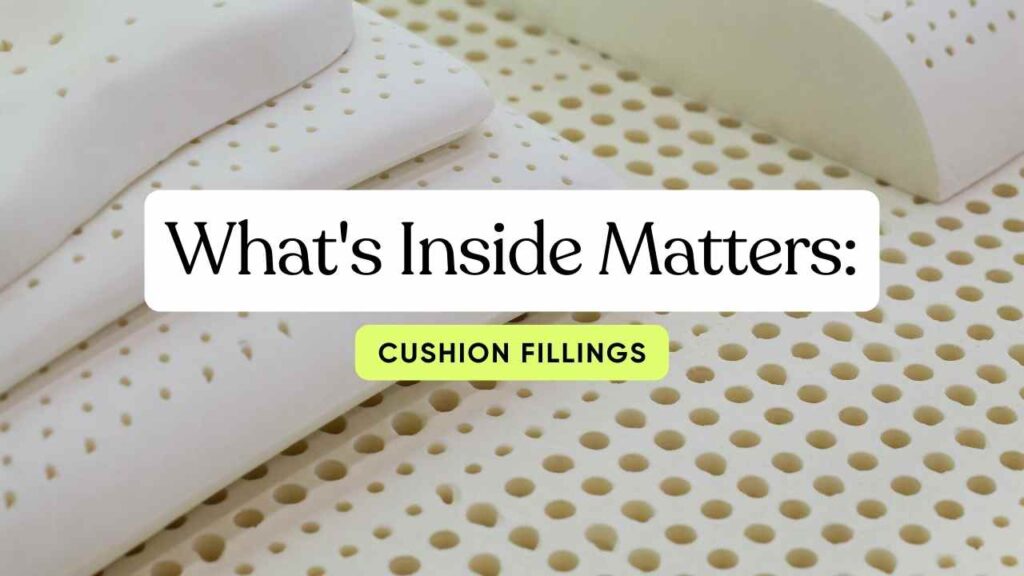
Now, let’s peek inside these cushions. The filling isn’t just fluff; it keeps your meditation from becoming a sore bottom fest.
- Buckwheat Hulls: These are the most popular. They mold to your body, giving you a custom-fit seat. It’s like having a cushion tailored just for you.
- Kapok Fiber: Lighter and fluffier than buckwheat, kapok is for those who prefer a firmer seat. Think of it as the memory foam mattress of meditation cushions.
- Cotton: A classic filling that offers a firmer support. It’s the no-frills, good ol’ reliable choice.
Choosing Your Meditation Cushion: A Personal Affair
Picking the right cushion is like choosing an ice cream shop flavor – it’s all about personal taste. Consider these:
- Your Flexibility: If touching your toes is a far-off dream, a higher cushion like a Zafu or bench might be your best bet.
- Meditation Duration: Planning to meditate longer than your favorite movie? Look for something with sturdy support like buckwheat.
- Space at Home: Got a cozy little corner or a wide-open space? Choose a cushion that fits your space without turning your living room into a yoga studio (unless that’s what you’re going for!).
Perfecting the Pose: Why Posture is the Pillar of Meditation
The Mind-Body Connection: More Than Just Sitting Still
Have you ever wondered why meditation gurus harp on about posture? It’s not just about looking picture-perfect. The way you sit is like the secret sauce in your meditation recipe. Get it right, and you’re in for a treat; get it wrong, and well, it’s like trying to enjoy a picnic in a thunderstorm.
Sitting in that sweet spot of perfect posture is like flipping a switch in your brain. Your mind clears, stress melts, and you’re no longer a prisoner to those pesky thoughts about your endless to-do list. It’s like telling your mind, “Hey, it’s chill time!”
The Slouch Struggle: Common Posture Pitfalls
But let’s face it, sitting like a Zen master isn’t second nature for most of us. We’re more accustomed to slouching in front of computers or curling up on couches. So, when we try to sit straight, it’s a battle. A slouch here, a slant there, and suddenly, we’re more focused on our creaky backs than breathing.
Common posture problems? Think hunched shoulders (like you’re shielding yourself from rain), a sleepy spine (more ‘S’ shaped than straight), and knees that feel like they’re in a knot. This not only makes meditation feel like a chore but can also lead to aches and pains that linger long after your session.
Cushions to the Rescue
Enter the meditation cushion, your trusty sidekick in the battle against the slouch. These aren’t just fancy floor accessories. They’re tools engineered to transform your meditation experience.
- Height Matters: By elevating your hips, cushions help maintain your spine’s natural ‘S’ curve. It’s like a mini-throne that tells your back, “Hey, keep it straight, will ya?”
- Angled for Success: Some cushions are angled, a subtle nudge for your pelvis to tilt forward. This tilt is like a magic button for keeping your spine straight without straining.
- Comfort is Key: Let’s be honest; if you’re sitting on something as complex as a rock, your focus will be on your numb bum, not your breath. Cushions provide that sweet spot of comfort and support.
Finding Your Center: Mastering the Art of Sitting on a Meditation Cushion
The Zafu Way: Your Cushion, Your Throne
Ready to take your seat on the Zafu cushion? Think of it as your throne where you’ll reign over your thoughts and find your inner peace. Let’s break it down step by step.
- Positioning the Cushion: Place your Zafu on your mat or the floor. The cushion should be firm, giving you a solid base to sit on. Imagine it’s a small pedestal, elevating you to greater mindfulness.
- Taking Your Seat: Lower yourself onto the Zafu, positioning it under your sit bones. It’s like finding the sweet spot on a swing – balanced and comfortable.
- Crossing Your Legs: Cross your legs in front of you. Don’t worry about fancy poses; a simple, comfortable cross-legged position will do. Think of it as settling into your favorite cozy chair.
Aligning for Alignment: Posture Perfection
Now that you’re seated, let’s fine-tune your posture. It’s all about creating a balance of ease and alertness.
- Spine Alignment: Sit tall, imagining a string pulling you up from the top of your head. This isn’t military drill sergeant straight, but naturally upright, like a tree reaching for the sun.
- Leg Position: Your legs should feel relaxed. If they’re screaming for mercy, adjust your position. It’s about comfort, not a test of endurance.
- Hand Placement: You can place your hands on your lap or knees. They should feel light, like leaves resting on water – no tension, just floating.
Exploring Alternatives: There’s More Than One Way to Sit
The Zafu isn’t a one-pose-wonder. There are several positions you can try, each with its flavor.
- Half-Lotus: One foot rests on the opposite thigh, while the other sits beneath the opposite knee. It’s like the classic cross-legged position’s more ambitious sibling.
- Full-Lotus: Both feet rest on opposite thighs. It’s a human pretzel and requires more flexibility.
- Burmese Position: Both feet lie flat on the floor, one in front of the other. It’s the more laid-back cousin, perfect for those who prefer a gentler seat.
- Seiza: Prefer not to cross your legs? Try the Seiza position, kneeling with the cushion between your legs. It’s like taking a respectful bow, offering a different kind of support and comfort.
Staying Comfy: Tips for Sustained Sitting
- Listen to Your Body: Discomfort is a signal, not a challenge. Adjust as needed – it’s a meditation session, not a game of statues.
- Stay Dynamic: Feel free to shift positions gently during your practice. It’s like a dance – fluid, responsive, and graceful.
- Take Breaks: If starting or sitting becomes too much, stand up, stretch, and walk a little. It’s like pressing a gentle reset button.
Sitting on your meditation cushion isn’t about enduring discomfort but finding a comfortable, stable position to explore your inner world. As we move forward, remember that meditation is a journey, not a destination. It’s about discovering what works best for you and embracing it fully.
Loving Your Cushion: The Art of Care and Maintenance
Keeping it Clean: A Fresh Approach to Your Meditation Cushion
Like your favorite cozy sweater, your meditation cushion needs some TLC to stay fresh and inviting. Let’s face it: no one wants to meditate on a cushion that’s seen better days.
- Cleaning 101: Check the label first – it’s like the instruction manual for your cushion. Most covers are removable and machine washable. It’s like giving your cushion a spa day; regular washing keeps it fresh and welcoming.
- Spot Cleaning: Spot cleaning is your friend for those little oops moments. A gentle detergent and a damp cloth can work wonders. It’s like erasing a minor blemish on an otherwise perfect painting.
- Air It Out: Let your cushion breathe. Now and then, place it in a sunny spot – not just for drying but to air out staleness. It’s like giving your cushion a dose of vitamin D.
When to Say Goodbye (or Just Refresh): Knowing When to Replace or Refill
Even the best things in life don’t last forever, and meditation cushions are no exception.
- Losing Shape: If your cushion feels more like a pancake than a supportive seat, it’s time to take action. It’s like fluffing a pillow; sometimes, it needs more stuffing to return its old charm.
- Refilling Options: Buckwheat hulls can get compressed over time. Refilling your cushion is like pumping air into a deflated tire – it brings back the support and comfort you need.
- Wear and Tear: Check for any indications of damage, such as fabric that appears to be frayed or a zipper that is not functioning correctly.
DIY Cushion Care: Personal Touches for Longevity
Adding a bit of DIY magic can extend the life of your cushion and make your meditation practice even more personal.
- Sew Your Cover: If you’re handy with a needle and thread, why not make a cover? Choose a fabric that speaks to you – it’s like dressing your cushion in its Sunday best.
- Refresh with Essential Oils: A drop or two of essential oils can add a new sensory dimension to your practice. It’s like infusing your session with a hint of nature’s best scents.
- Store Properly: Keep your cushion in a dry, clean place when not in use. Evade direct sunlight for long periods, which can fade the colors. It’s like tucking your cushion in for a good night’s sleep.
Taking care of your meditation cushion means caring for your practice. It’s a small but meaningful way to honor the space you’ve created for mindfulness and tranquility.
Embracing the Journey: Wrapping Up Our Meditation Adventure
A Journey Remembered: Key Takeaways
As we end our meditation exploration, let’s take a moment to reflect on the ground we’ve covered. It’s been a journey of discovery, comfort, and personal growth.
- Choosing Your Cushion: We started by finding the perfect meditation cushion – your trusty companion in this journey. Whether it’s a Zafu, a V-shaped, a Crescent, or a Bench, remember, it’s all about what feels right under you.
- Posture Matters: We learned that posture isn’t just about looking good; it’s the core of your meditation practice. Sitting correctly helps your mind clear and focus, making each session fruitful.
- Setting the Scene: From there, we ventured into creating your serene space and dressing for comfort. Your meditation spot is your oasis, a place where calmness and clarity reign.
- The Art of Sitting: We delved into the art of sitting – finding that perfect balance of comfort and alertness on your cushion. We navigated through different sitting positions, emphasizing that flexibility in approach is vital.
- Tackling Challenges: We tackled the everyday challenges of physical discomfort, adjusting for better support and knowing when to take a break. Meditation is not about enduring pain but about finding peace and comfort.
- Cushion Care: Lastly, we looked at caring for your meditation cushion, ensuring it remains a clean, supportive, and cherished part of your practice.
How to Sit on a Meditation Cushion: Conclution
As we part ways on this written journey, remember that meditation is a deeply personal experience. There’s no one-size-fits-all approach here. Experiment with different cushions, postures, and techniques. Some days, you prefer a Zafu; other days, a bench is your go-to. A full-lotus pose is your jam, or perhaps you’ll find peace in the simplicity of a Burmese position.
The beauty of meditation is a practice that molds to fit you, not the other way around. So, don’t be afraid to try new things, adjust, and readjust until you find what resonates with your body and soul.
Remember, every meditation journey is unique, just like every sunset. Cherish yours, nurture it, and watch as it transforms your mind and your life.

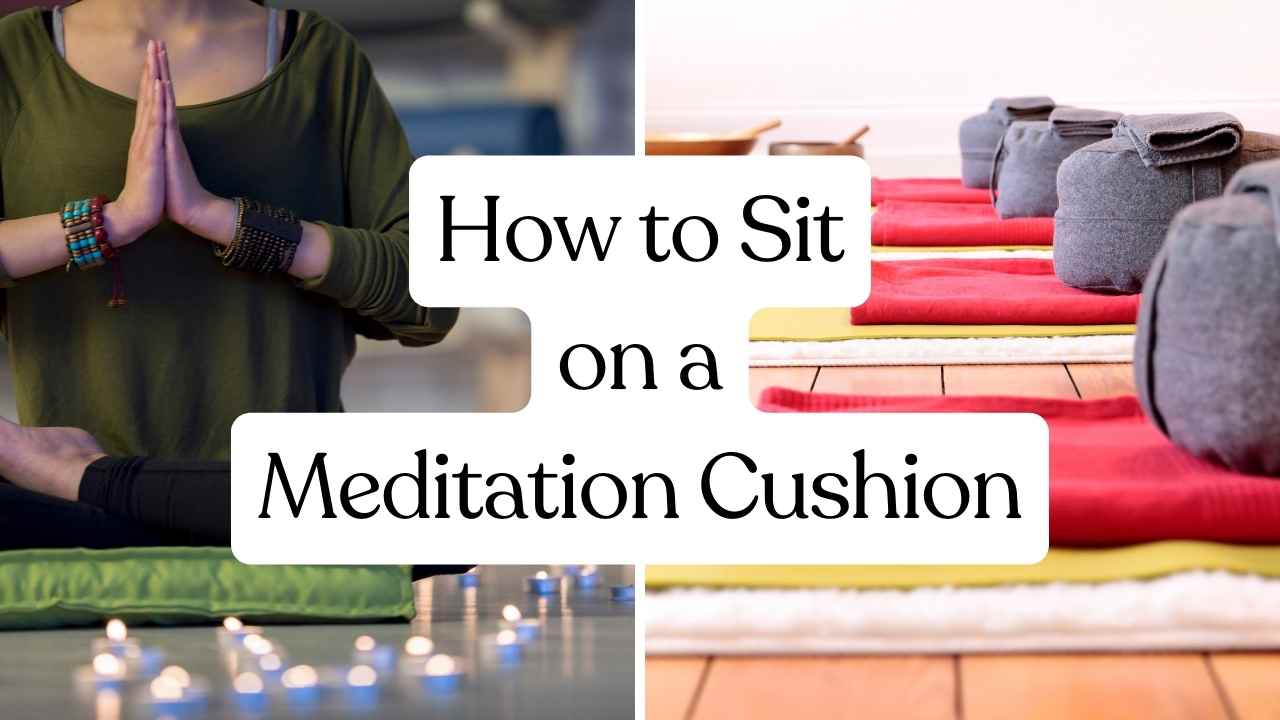
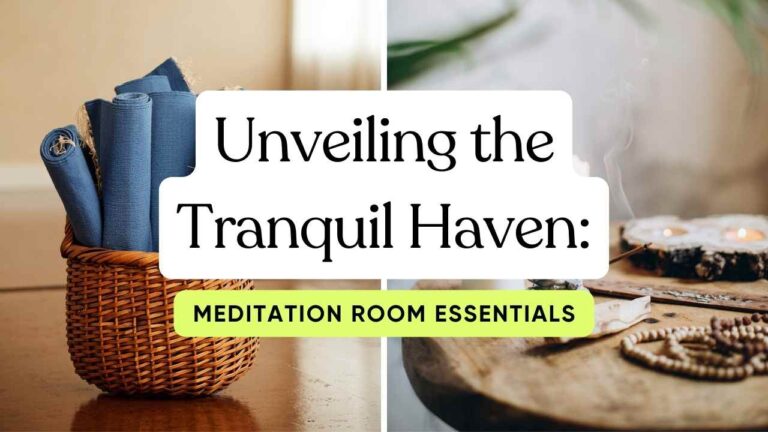
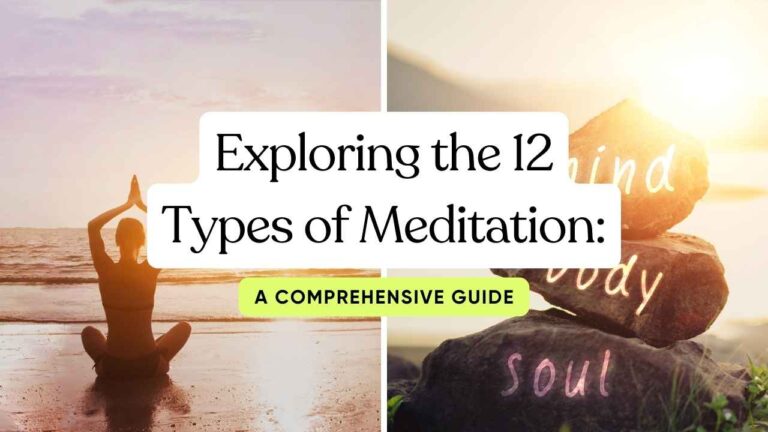

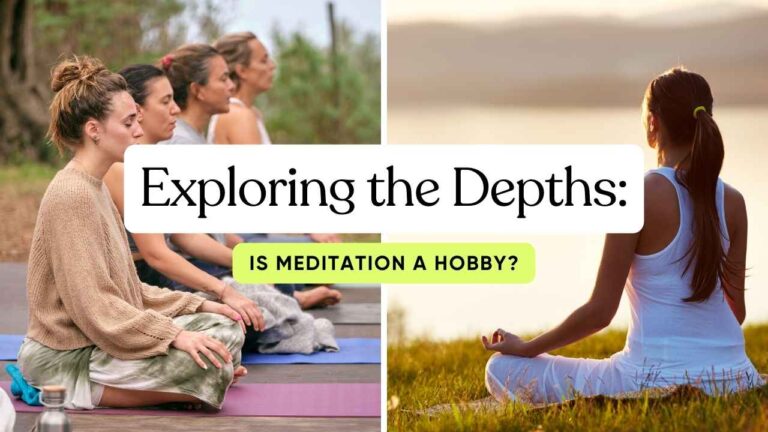
One Comment